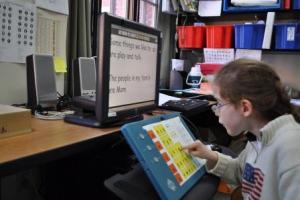Low Vision Affects the Reading Process Quantitatively But Not Qualitatively

Low Vision Affects the Reading Process Quantitatively But Not Qualitatively
By Anna M. T. Bosman, Marjolein Gompel, Mathijs P. J. Vervloed, and Wim H. J. van Bon;
Journal of Special Education, Vol. 39, no. 4, pp. 208-219 (Winter 2006)
In this article, the authors compare the reading behavior of students with low vision to that of two groups of students with normal vision (reading-match and age-match students). In Experiment 1, students identified the first letter in words and nonwords and the researchers measured latency and accuracy. No group differences were found for latency, but the reading-match group differed from the other two groups on accuracy. All three groups identified the first letter of words faster than they did for nonwords. In Experiment 2, students named words with typical and atypical letter—sound relationships; the researchers measure latency and accuracy. Both the low-vision and the reading-match groups were slower than the age-match group; only the reading-match group made more errors on typical stimuli than on atypical stimuli. The absence of significant interactions between group and any experimental-word variable justified the conclusion that low vision affects the reading process quantitatively but not qualitatively.
